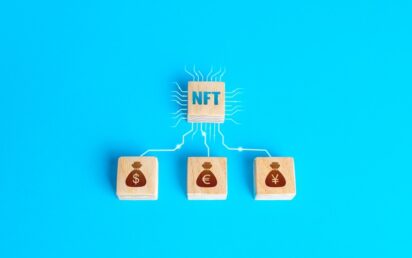In a world increasingly driven by cryptocurrency and blockchain, NFT’s unique digital assets that can be owned and transferred over the blockchain are becoming more popular.
NFT stands for Non-Fungible Token; that is to say, each token has its own value and cannot be replaced by other tokens. As opposed to cryptocurrencies such as Bitcoin and Ethereum, NFTs possess unique features. For instance, they can be traded by owners, while other cryptocurrencies cannot. As early as 2017, people in the blockchain industry started paying attention to NFTs, and many applications have been found for them. As early as the first quarter of 2018, there were already more than 100 million NFTs on the Ethereum network, with prices ranging from a few cents to tens of dollars.
How do Non-Fungible Tokens work?
NFTs work in a similar way as cryptocurrencies. However, NFTs aren’t fungible assets, and each token on the blockchain possesses its own value. Digital assets are owned by an address, which is different from the public key address associated with cryptocurrencies. Anyone can create a digital asset, just like creating an account on any application that supports NFTs. In addition, users can transfer ownership over digital assets. Digital asset owners can be any individual or organization with a certain blockchain address. The digital asset can be transferred to another address, and the owner of the digital asset will receive a new one.
NFTs are created by users who can have an unlimited number of NFTs. Users can exchange digital assets with others or transfer NFTs to their own accounts. Some cryptocurrency exchanges also support NFT transactions. The main purpose of using NFTs is to allow users to trade their tokens without going through a traditional third party such as an exchange. This is because the NFTs are unique and cannot be replaced. NFTs can be used for in-game assets, collectibles, rights to earnings from intellectual property, and so on. In the future, NFTs will not only be used to create digital assets but also to own physical assets such as houses and gold certificates. The brilliant thing about blockchain is that we can now own assets without a third party interfering with them.
How to create NFTs & earn money?
The process of creating NFTs is relatively simple. Users can transfer NFTs on the blockchain with a specific address. The address could be a contract or just a wallet on an application. The important part of NFT creation is its digital signature, which is generated by an algorithm and stored on the blockchain. Users only need to add information such as how many tokens they want to create when creating the signature and then transfer ownership over the digital assets. This article focuses on how to earn money through NFT trading, for example through all-inclusive software developed by Nft Profit.
1. Creating NFTs and selling them on an exchange
The first way of earning money with NFTs is to create a digital asset, sell it for real money or cryptocurrencies, and then transfer them to another address for sure. This will not only allow you to earn money but also widen your blockchain knowledge. We have already mentioned that token owners can be any individual or organization with a specific address. These tokens could also be sold on exchanges. There are two main methods of selling tokens on exchanges; one is to create a new address from an exchange account and then transfer the tokens to that account, and the other is to directly transfer the tokens there. You can check for various exchange websites that support NFTs and list them on the exchange. In addition to this, you can also sell NFTs through your own website.
2. Decentralized exchanges
As NFTs are becoming more popular, there are also a number of decentralized exchanges that support NFT trading. Binance, OKEx, and EtherDelta are some of the exchanges that support NFT trading. These decentralized exchanges allow users to trade their NFTs without going through a third party and reduce transaction fees costs significantly. However, conversion from fiat currencies to digital assets is still difficult. Users must first transfer money to centralized exchanges before transferring them to decentralized ones.
3. Dividing NFTs into smaller units and selling them on an exchange
A third way of earning money with NFTs is to divide the tokens into smaller units, list them on exchanges, and sell them at a higher price. You can do this by using a decentralized exchange or setting up one yourself. The small tokens will be sold at a higher price as they will have more flexibility in trading. In the future, such token construction will become more complex and will consist of multiple parts. Many people are forecasting that it will be possible for NFTs to be built using smart contracts on the Ethereum blockchain.
Conclusion
NFTs have a lot to offer, which can be categorized into four categories: virtual exchange, virtual assets, blockchain games, and intellectual property rights. The main purpose of creating NFTs is to provide users with an alternative way to trade their digital assets without a traditional third party, such as an exchange. NFTs are also very valuable in the digital asset industry and are currently used more than any other cryptocurrency. The future of NFTs is in the hands of developers, and whether it will become a mainstream commodity or not will depend on their creativity.


